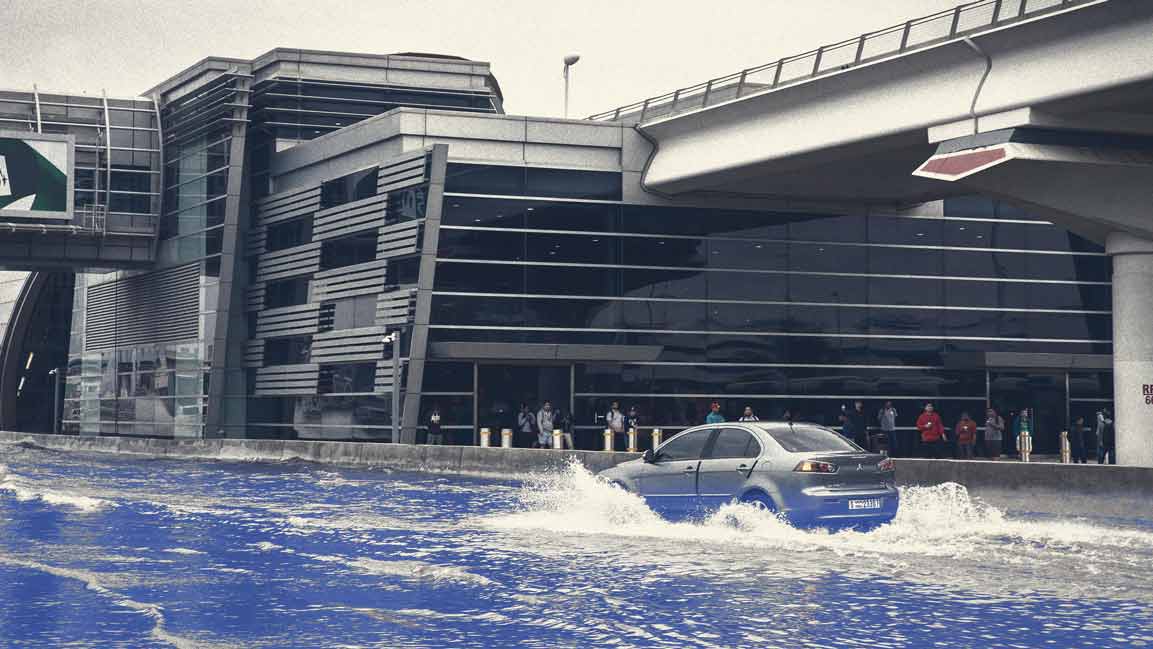- | 10:00 am
Climate change is blowing down houses. This could save them
Extreme windstorms are an increasingly destructive threat, but resilient design can help.

Winds are becoming more destructive, and most buildings aren’t ready for it. A recent analysis by the Federal Emergency Management Agency found that 38 states in the U.S. have a worryingly low rate of adopting hazard-resistant building codes. In the face of threats like extreme wind, hurricanes, and tornadoes, less than a quarter of cities in states like Texas, Mississippi, Louisiana, and Massachusetts have building codes that account for the increasing risks.
Global engineering firm Arup sees this as a design problem. The company has just released a set of resilience-based design guidelines to help designers and building owners prepare homes and businesses to better withstand extreme windstorms. With a warming atmosphere and rising sea levels, buildings will be faced with major storms and hurricanes even more often.
“Every year, we’re seeing losses from disasters get worse and worse. Not just from a financial perspective, but also from a community perspective [in terms of] displaced people, and also disrupted operations and logistics,” says Mark Nelson, an associate principal at Arup who led the development of the extreme windstorms guidelines. “Even just general windstorms that aren’t category five hurricanes can cause a lot of damage.”
The new guidelines focus on three main areas: building resilience, site resilience, and operational resilience.
On the building side, that means securing the exterior of an office or home to prevent damage that can break windows, cause leaks, or otherwise breach the so-called building envelope. From designing with stronger roof materials to upgrading windows and doors with storm guards, buildings can be enhanced to reduce the chances of wind busting through the walls. “Once the wind gets inside a building, it usually comes with rain, and it usually causes a huge amount of damage,” Nelson says.

[Photo: Jon Cherry/Getty Images]
Site resilience requires looking at what’s surrounding a building, and what in the immediate area could pose a threat during an emergency. “Most of the debris in storms, particularly that damage big buildings, is parts of other buildings that fly by,” Nelson says, adding that should come into play when new projects are being planned and sites are being selected. A coastal location next to an older building with loose façade panels is not likely the wisest choice, for example. Site analyses can identify these kinds of risks in neighboring buildings, or even in trees and vegetation that could pose risks under high winds.Operational resilience is one of the biggest considerations, Nelson says. A building may not be able to come out of an extreme weather emergency unscathed, but that doesn’t mean it can’t continue to serve its purpose, whether as housing, an office, a data center, or a hospital. “Resilience is not just damage, it’s the ability to bounce back and recover, and if the power isn’t on, most buildings can’t be used for their intended function,” Nelson says. Adding backup generators, off-grid renewable power supplies, and flood-proof electrical systems can help buildings withstand outages and remain operational.
Arup’s design guidelines are part of a broader effort to improve the way buildings withstand the threats posed by climate change. Dubbed the Resilience-based Design Initiative (REDi), this growing collection of guidelines is adding an additional layer of rigor on top of existing building codes to address threats like seismic activity and flood risk. “As designers, we need to be doing better to anticipate and design for these types of climate risks,” Nelson says. Building codes, though slow to change, may be able to gradually adopt some of the ideas being proposed in these guidelines.
As of now, Nelson says the buildings most likely to be designed with these considerations are facilities like hospitals, government buildings, and large offices–structures where downtime has significant financial or societal costs. But these concepts are equally applicable in homes and other buildings, especially as extreme windstorms become more common.
“With climate change those events are only going to be more frequent or more severe, and sometimes both,” Nelson says. “Hopefully those design philosophies will trickle down to everyday buildings.”






































